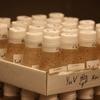Disease-related studies
. 9/13/2016. “An Integrative Analysis of the InR/PI3K/Akt Network Identifies the Dynamic Response to Insulin Signaling.” Cell Reports, 16, 11, Pp. 3062-3074.Abstract
DRSC & TRiP at TAGC 2016
. 2005. “Genome-wide RNAi screen for host factors required for intracellular bacterial infection.” Science, 309, 5738, Pp. 1248-51.Abstract
. 2011. “An integrative approach to ortholog prediction for disease-focused and other functional studies.” BMC Bioinformatics, 12, Pp. 357.Abstract
. 2016. “Combined Gene Expression and RNAi Screening to Identify Alkylation Damage Survival Pathways from Fly to Human.” PLoS One, 11, 4, Pp. e0153970.Abstract
. 2010. “A genomewide RNA interference screen for modifiers of aggregates formation by mutant Huntingtin in Drosophila.” Genetics, 184, 4, Pp. 1165-79.Abstract
. 2014. “Integrating protein-protein interaction networks with phenotypes reveals signs of interactions.” Nat Methods, 11, 1, Pp. 94-9.Abstract
. 2006. “A mutation in Orai1 causes immune deficiency by abrogating CRAC channel function.” Nature, 441, 7090, Pp. 179-85.Abstract
. 2011. “Proteomic and functional genomic landscape of receptor tyrosine kinase and ras to extracellular signal-regulated kinase signaling.” Sci Signal, 4, 196, Pp. rs10.Abstract
. 2010. “Automatic robust neurite detection and morphological analysis of neuronal cell cultures in high-content screening.” Neuroinformatics, 8, 2, Pp. 83-100.Abstract
. 2015. “Regulators of autophagosome formation in Drosophila muscles.” PLoS Genet, 11, 2, Pp. e1005006.Abstract
. 2007. “RNAi screen in Drosophila cells reveals the involvement of the Tom complex in Chlamydia infection.” PLoS Pathog, 3, 10, Pp. 1446-58.Abstract
. 2013. “A genome-wide RNA interference screen identifies new regulators of androgen receptor function in prostate cancer cells.” Genome Res, 23, 4, Pp. 581-91.Abstract


